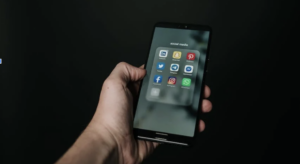In the frenetic world of TikTok, where trends rise and fall in the blink of an eye, timing is everything. With over a billion active users, the platform offers unparalleled opportunities for content creators to reach vast audiences. However, it’s crucial to understand the best times to post to maximize engagement and visibility.
In this article, we delve into the science behind scheduled posting on TikTok, exploring why it’s important and when exactly is the best time to post.
The Significance of Scheduled Posting
Scheduled posting isn’t merely a convenience; it’s a strategic approach to harnessing TikTok’s algorithm to your advantage. TikTok’s algorithm is designed to prioritize content that garners immediate engagement upon posting. Therefore, knowing the best time to post determines whether your content gains traction or gets lost in the shuffle.
By scheduling your posts for peak times, you increase the likelihood of catching the attention of users scrolling through their feeds. Moreover, consistent posting at optimal times signals to the algorithm that your account is active and relevant, potentially boosting your content’s visibility in users’ For You pages.
How to Find the Best Time to Post on TikTok
If you’re looking to grow your presence on TikTok, you’ll need to make sure you’re posting your content at the right time. With so many users on the platform, it can be challenging to stand out from the crowd. Here are 9 strategies you can use:
1. Analyze Your Audience
Understanding your audience demographics is crucial for effective social media management. Here’s how to do it:
- Demographic Data: Use tools like Google Analytics, Facebook Insights, or Instagram Insights to gather demographic information about your audience. This includes age, gender, location, and interests.
- Behavioral Analysis: Analyze your audience’s online behaviors. Look at when they are most active on social media, what type of content they engage with the most, and which platforms they prefer.
- Feedback and Surveys: Engage with your audience directly through surveys, polls, or feedback forms to gather insights into their preferences, interests, and habits.
2. Understand TikTok’s Algorithm
To find out when is the best time to post, it’s essential to grasp how TikTok’s algorithm operates. Unlike chronological feed-based platforms, TikTok relies on a complex algorithm that considers various factors to determine which content to showcase to users.
One of the primary metrics that TikTok prioritizes is engagement. The algorithm assesses how users interact with your content—likes, comments, shares, and watch time—to gauge its popularity and relevance. Consequently, posting at times when your target audience is most active increases the likelihood of generating immediate engagement, signaling to the algorithm that your content is worth promoting.
3. Analyze Your Competitors
Analyzing your competitors’ posting strategies can provide valuable insights into industry trends and audience behavior. Here’s how to do it effectively:
- Identify Key Competitors: Identify competitors who share a similar target audience and content niche.
- Monitor Posting Frequency and Timing: Observe when your competitors are posting and how frequently they are engaging with their audience. Pay attention to the timing of their most successful posts.
- Analyze Engagement Levels: Look at the engagement metrics (likes, comments, shares) on your competitors’ posts to gauge the effectiveness of their posting strategies.
- Identify White Spaces: Identify gaps or opportunities where your competitors may not be effectively engaging with their audience. This could be a chance for you to fill that void with your content.
4. Gather Social Media Insights
Most social media platforms offer built-in analytics tools that provide valuable insights into your audience’s behavior. Here’s how to leverage them:
- Platform-Specific Analytics: Utilize the analytics tools provided by each social media platform you’re active on (e.g., Facebook Insights, Twitter Analytics, LinkedIn Analytics).
- Identify Peak Activity Times: Use these tools to identify peak activity times when your audience is most active on each platform.
- Content Performance Analysis: Analyze the performance of your past posts to identify trends and patterns in engagement. Look for correlations between posting times and engagement metrics.
- Audience Demographics: Gain insights into your audience demographics, including age, gender, location, and interests, to tailor your content and posting schedule accordingly.
5. Identify Peak Posting Times
Determining the best time to post on TikTok requires a nuanced understanding of your audience demographics and their browsing habits. While there isn’t a one-size-fits-all approach, several studies have shed light on general trends regarding peak posting times.
For instance, evenings, particularly between 6:00 PM and 9:00 PM, tend to be prime time for TikTok engagement, as users unwind after work or school. Similarly, weekends often see heightened activity, with users spending more time browsing content.
However, it’s crucial to remember that audience behavior can vary based on factors such as location, age group, and interests. Utilizing TikTok’s analytics tools can provide invaluable insights into your audience’s activity patterns, allowing you to tailor your posting schedule accordingly.
6. Choose a Content Type
Considering the type of content you’re posting is essential for determining the best posting times. Here’s how to tailor your schedule based on content type:
- Relevance and Timing: Consider the relevance of your content to the time of day or day of the week. For example, posting breakfast recipes early in the morning when people are looking for breakfast ideas.
- Audience Behavior: Understand when your audience is most likely to engage with specific types of content. For instance, if you’re sharing informative articles, posting during weekdays when people are at work might be more effective.
- Variety in Content Schedule: Maintain a balance and variety in your content schedule. Mix up the types of content you post and experiment with different posting times to keep your audience engaged and interested.
7. Craft a Tailored Posting Schedule
Armed with insights into your audience’s behavior and TikTok’s algorithmic preferences, you can craft a tailored posting schedule to maximize your content’s reach and impact. Here’s a step-by-step guide to creating an effective posting strategy:
- Content Calendar: Create a content calendar outlining what content you’ll post and when. This helps maintain consistency and ensures you’re covering a variety of topics.
- Use Scheduling Tools: Utilize scheduling tools like Buffer, Hootsuite, or Later to schedule your posts in advance. These tools allow you to plan and schedule content across multiple platforms.
- Batch Content Creation: Dedicate specific times to create content in batches. This allows you to streamline the content creation process and ensures you have a consistent flow of content to schedule.
- Optimize for Each Platform: Different social media platforms may have different optimal posting times. Tailor your scheduling strategy to each platform based on your audience’s behavior.
- Engagement Monitoring: Even after scheduling posts, monitor engagement and adjust your posting schedule accordingly. If you notice a particular time consistently performs better, consider adjusting your schedule to prioritize that time slot.
- Stay Flexible: While scheduling posts in advance is beneficial for consistency, it’s essential to remain flexible. Be prepared to adapt your schedule based on current events, trends, or changes in your audience’s behavior.
8. Consider the Time Zones
If your audience is spread across different time zones, scheduling posts to reach them at optimal times in their respective time zones is crucial. Here’s how to do it effectively:
- Identify Time Zones: Determine the primary time zones where your audience is located. This information can be gathered from demographic data provided by analytics tools.
- Schedule Posts Accordingly: Use scheduling tools that allow you to specify the time zone for each post. Schedule posts to reach different segments of your audience at optimal times in their respective time zones.
- Consider Peak Activity Times: Take into account peak activity times in each time zone when scheduling posts. Aim to publish content when the majority of your audience is likely to be online and active.
- Experiment and Adjust: Experiment with different posting times in various time zones and analyze the performance of your posts. Adjust your posting schedule based on the insights gained from experimentation.
9. Experiment
Testing different posting times is essential to find the optimal schedule for your audience. Here’s how to approach it:
- Start with Industry Standards: Begin by posting at common times recommended for your industry based on general trends and research.
- A/B Testing: Experiment with different posting times and days of the week. For example, try posting in the morning, afternoon, and evening on different days to see which times generate the most engagement.
- Track and Analyze Results: Use analytics tools to track the performance of your posts. Look for patterns and correlations between posting times and engagement metrics such as likes, comments, shares, and click-through rates.
- Iterative Approach: Gradually adjust your posting schedule based on the insights gained from experimentation. Continuously refine your strategy to optimize engagement over time.
By continuously refining your posting strategy based on data-driven insights, you can enhance your chances of success on TikTok and build a loyal following over time.
The Bottom Line
In the dynamic world of TikTok, timing is a critical factor that can make or break your content’s success. Scheduled posting isn’t just about convenience; it’s a strategic approach to optimizing engagement and visibility on the platform.
By understanding TikTok’s algorithm, identifying peak posting times, and crafting a tailored posting schedule, you can unlock the full potential of your content and propel your TikTok journey to new heights.
Frequently Asked Questions (FAQs)
Why is timing important when posting on TikTok?
Timing is crucial on TikTok because the platform’s algorithm prioritizes content that receives immediate engagement upon posting. Posting at peak times increases the likelihood of catching users’ attention and generating engagement, which, in turn, boosts visibility and reach.
How can I determine the best time to post on TikTok?
Determining the best times to post involves analyzing your audience demographics and their browsing habits. Utilize TikTok’s analytics tools to gather insights into when your followers are most active. Experiment with posting at different times and days of the week to identify peak engagement periods.
Are there specific times or days that are universally best for posting on TikTok?
While there are general trends regarding peak posting times, such as evenings and weekends, the optimal posting times can vary based on factors like audience demographics and interests. It’s essential to analyze your audience’s behavior and refine your posting schedule accordingly.
Should I prioritize consistency in my posting schedule?
Yes, consistency is key to maintaining engagement and signaling to TikTok’s algorithm that your account is active and relevant. Aim to establish a regular posting schedule that aligns with your audience’s activity patterns while ensuring each post maintains quality and relevance.
How often should I post on TikTok?
The frequency of posting depends on various factors, including your content strategy, audience preferences, and available resources. While some creators post multiple times a day to maintain visibility, others may opt for a less frequent schedule. Experimentation and monitoring your audience’s response can help determine the optimal posting frequency for your account.



